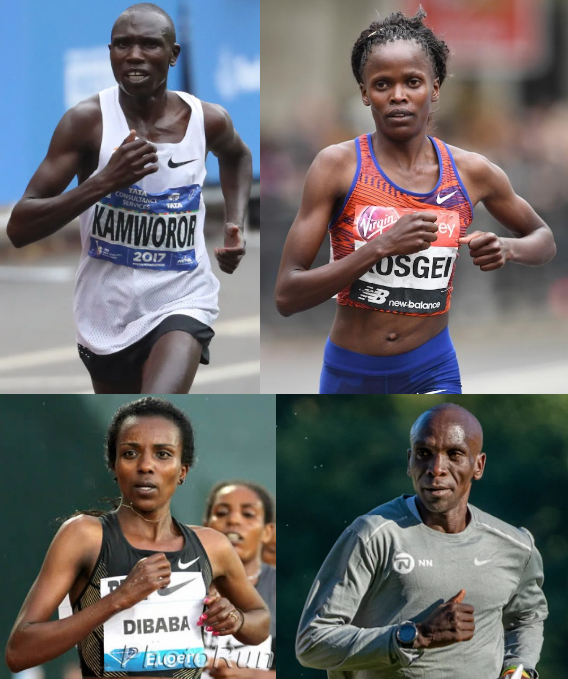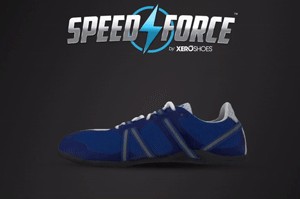A pivotal moment in the history of running happened in the early 2000’s when ground-breaking research by Dr. Daniel Liberman proved that landing with a forefoot strike is safer than landing with a heel strike. Comparative studies since then consistently found the same conclusion, but it is also evident that your upper body mechanics is just as important as foot strike!
There’s overwhelming evidence that running with greater thoracic rotation (letting your torso sway slightly side-to-side) and a slight forward lean (greater trunk flexion) results in significantly less stressed aspects along the upper body!


It turns out that the amount of stress and strain on the back during running is strongly influenced by trunk flexion and thoracic rotation.
- Researchers have documented that runners who don’t lean forward and twist their trunk have less pelvis-trunk coordination pattern that’s rigid (stiff) and are more likely to experience lower back pain compared to runners who lean forward and twist with their upper body.
Case in point came from a 2014 study in the European Journal of Sports Science found that runners with lower back pain had less pelvic-trunk bend and twist compared with controls. Other investigations have found that runners with lower back pain had a more ‘guarded gait’ than healthy runners.
- A guarded gait significantly limits trunk range of motion and allows the possibility that lower back pain will become chronic.
Based on their results, the researchers concluded that clinicians should target velocity components in multiple planes of motion when treating runners with lower back pain. In other words, allowing your trunk to rotate swiftly during running safeguards the back from pain and injury by effectively improving load transfer mechanisms and internal stress states within the trunk.
As for trunk flexion, it has been emphasized many times in the scientific literature that tilting slightly forward when running optimizes load distribution in the lower extremity joints, especially the knees. One example came from a 2015 study in the journal Medicine and Science in Sports and Exercise which revealed that a slight forward trunk bend reduced loading on the knee-joint without compromising biomechanical demands at the ankle during running.
Here are more reports verifying that leaning forward when running is more optimal than running too upright:
-
How to Run Properly? Forefoot Strike and Lean Forward!
-
Why Leaning Forward When Running is Better for Your Knees!
The Take Home Message
If you feel that something more is needed to help you run with greater ease, make sure you’re running with thoracic rotation because its well on record for being an important component of reducing shock transmission through the body.
To give you a clear-eyed view on how to increase your thoracic rotation, you have to make adjustments in your arm swing, and I did two extremely helpful videos showing just that:
If you’ve enjoyed this blog post, you’ll LOVE my YouTube channel, here, where I talk at lengths about the evidence-based reasons that forefoot running is better than heel strike running by every measure!
References:
Hsiang-Ling, T and Powers, CM. Influence of trunk posture on lower extremity energetics during running. Med Sci Sports Exer, 2015;47(3):625-6.
Lamoth, C. J., Meijer, O. G., Wuisman, P. I., van Dieen, J. H., Levin, M. F., & Beek, P. J. (2002). Pelvis-thorax coordination in the transverse plane during walking in persons with
nonspecific low back pain. Spine, 27, E92 – E99.
Seay et al. Trunk bend and twist coordination is affected by low back pain status during running. Euro J Sport Sci, 2014;14(6):563-68.
Seay, J. F., Van Emmerik, R. E., & Hamill, J. (2011b). Low back pain status affects pelvis-trunk coordination and variability during walking and running. Clinical Biomechanics (Bristol, Avon), 26, 572 – 578.
Bretta Riches
BSc Neurobiology; MSc Biomechanics candidate, ultra minimalist runner & founder of RunForefoot. I was a heel striker, always injured. I was inspired by the great Tirunesh Dibaba to try forefoot running. Now, I'm injury free. This is why I launched Run Forefoot, to advocate the health & performance benefits of forefoot running and to raise awareness on the dangers of heel striking, because the world needs to know.
Latest posts by Bretta Riches (see all)
- Can You Run In Barefoot Shoes? Yes, But DON’T Heel Strike! - 21/07/2024
- Why Cushioned Running Shoes Are Really Bad for Your Feet - 19/07/2024
- Do Cushioned Running Shoes Cause Injuries? - 17/07/2024


Leave a Reply